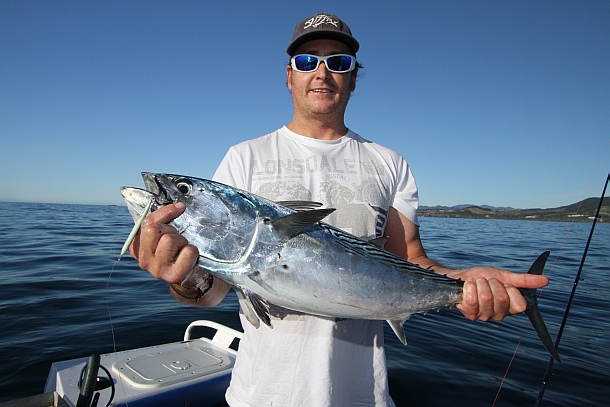IN today’s world, many political decisions are increasingly being made based on reactions to various topics in such authoritative media as Facetube or Twitbook.
Activist groups in particular seem well organised and utilise social media to get their messages out quickly and cheaply, generating emotive responses to particular issues from largely uninformed followers. Any scientific basis for decision making is often discarded in the early exchanges and the debate degenerates into an emotive numbers game as politicians get lobbied electronically from both sides. The recent supertrawler issue comes to mind here.
Another issue of relevance to anglers that has been fermenting in the background over the past decade has been the debate over whether fish “feel pain”. The debate on fish pain has existed in the scientific literature for probably over 100 years. Early anatomical studies of sharks, rays and bony fish found that while sharks and rays lacked particular nerve receptors that detect injurious stimuli (nociceptors), bony fish possessed them, albeit at much lower numbers than “higher ” vertebrates like mammals. Furthermore, it was well known that feelings of pain in higher vertebrates were generated in the brain, not in the nociceptors. There is no such thing as “pain receptors”, only these nervous pathways to the brain where the signals are then further processed consciously. Because of this, and the relatively primitive brain structures of fishes, scientists working in the field were traditionally highly cautious with using the word “pain” during their interpretations of fish behaviour in relation to injury.
This all changed in 2003 when research conducted by Dr Lynn Sneddon and others in the UK received widespread media publicity. In a series of experiments, Sneddon and her colleagues injected bee venom and acetic acid into live trout to observe their behavioural reactions. The results confirmed nothing new – they found that fish had nociceptors and when the mouth was injected with poisons, the fish behaved abnormally. Sneddon’s interpretations, however, that the abnormal behaviour was evidence that fish could “feel pain”, were and still are strongly contested by leading neuroscientists, ichthyologists and fisheries professionals today.
A recent paper entitled “Can fish really feel pain?” by Rose et al. (including yours truly) published in the international journal Fish and Fisheries has added to this body of evidence by critically reviewing the results of several recent studies on fish pain that have attempted to replicate Sneddon’s work. They found numerous deficiencies and inconsistencies arising from Sneddon’s studies, not the least being that other scientists have not been able to replicate her results. In fact, most of the abnormal behaviours reported by Sneddon and others who copied her work were found likely to be due to recovery from the anaesthesia she used. After all, just because an animal reacts to a potentially harmful stimulus (like a worm as it wriggles on a hook, or a trout rocking groggily from side to side as reported by Sneddon), it’s not necessarily an indication that it is experiencing pain.
Rose et al. also found that Sneddon’s assertions that her results were relevant to angling were not supported by her data, given that her control fish injected with saline behaved normally. Inserting a hook is similar to inserting a needle, but without the saline injection, thus trauma due to hooking during angling was essentially equivalent to her control, not the acid injections.
Rose et al. also reviewed scientific literature involving surgeries and tagging, that showed fish exhibited normal feeding and activity immediately or soon after both. They also pointed out that bony fish are evolutionarily more closely related to sharks and rays, for which there is scant evidence that they even possess the receptors required to send damage messages to the brain. They concluded that sharks and bony fish have survived well in an evolutionary sense without the full range of nociception typical of humans or other mammals, because it would otherwise be disadvantageous to their survival in the aquatic environment.
Rose et al. found that due to the poor design and interpretation of the studies like Sneddon’s, the researchers were unable to distinguish unconscious detection of injurious stimuli (nociception) from conscious pain. Results were also frequently misinterpreted, and Rose et al. noted much of this research in this field seemed “mission oriented” with underlying agendas that contrast from the more detached tradition expected of basic science. For all of these reasons, Rose et al. concluded that claims that fish, and invertebrates (research on invertebrates was also plagued with the same issues as the fish work) “feel pain” remain unsubstantiated.
Already the results of the review have stirred tabloid media in the UK and elsewhere, stimulating a frenzy of social media for and against the results of the study. Funnily enough, much of the debate was completely uninformed, as it had started even before the paper (which is a substantial 28 page review) was fully available to the public.
It seems the loudest voices on social media (and even mainstream media!) don’t waste much time actually reading the peer reviewed science from experts before they go off on their various rants. Those who would like to take a more informed view of the issue would do well to visit the Fish and Fisheries website to read the abstract http://onlinelibrary.wiley.com/doi/10.1111/faf.12010/abstract, or even download the paper yourself. At least then you can have a read first before getting onto your favourite internet soapbox.

















